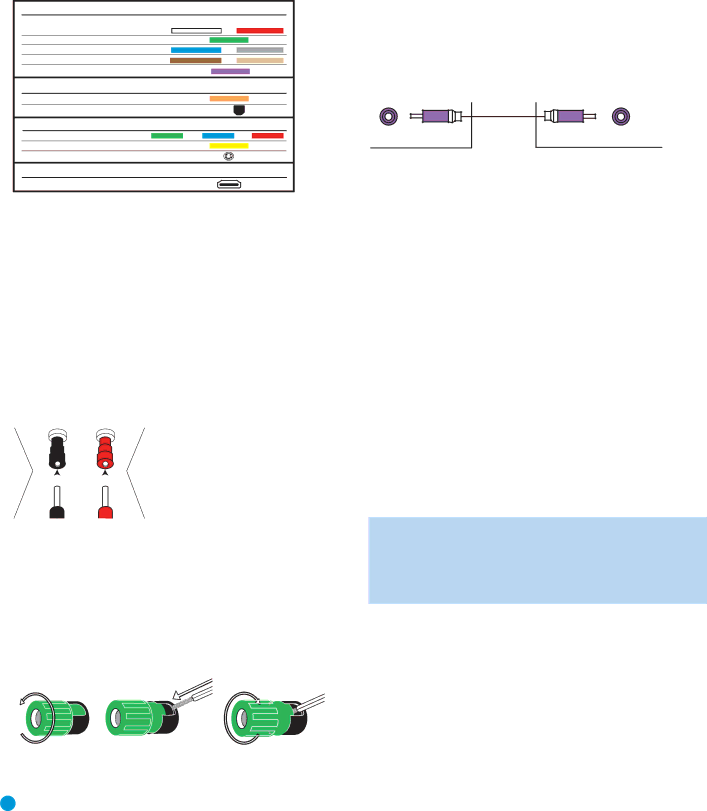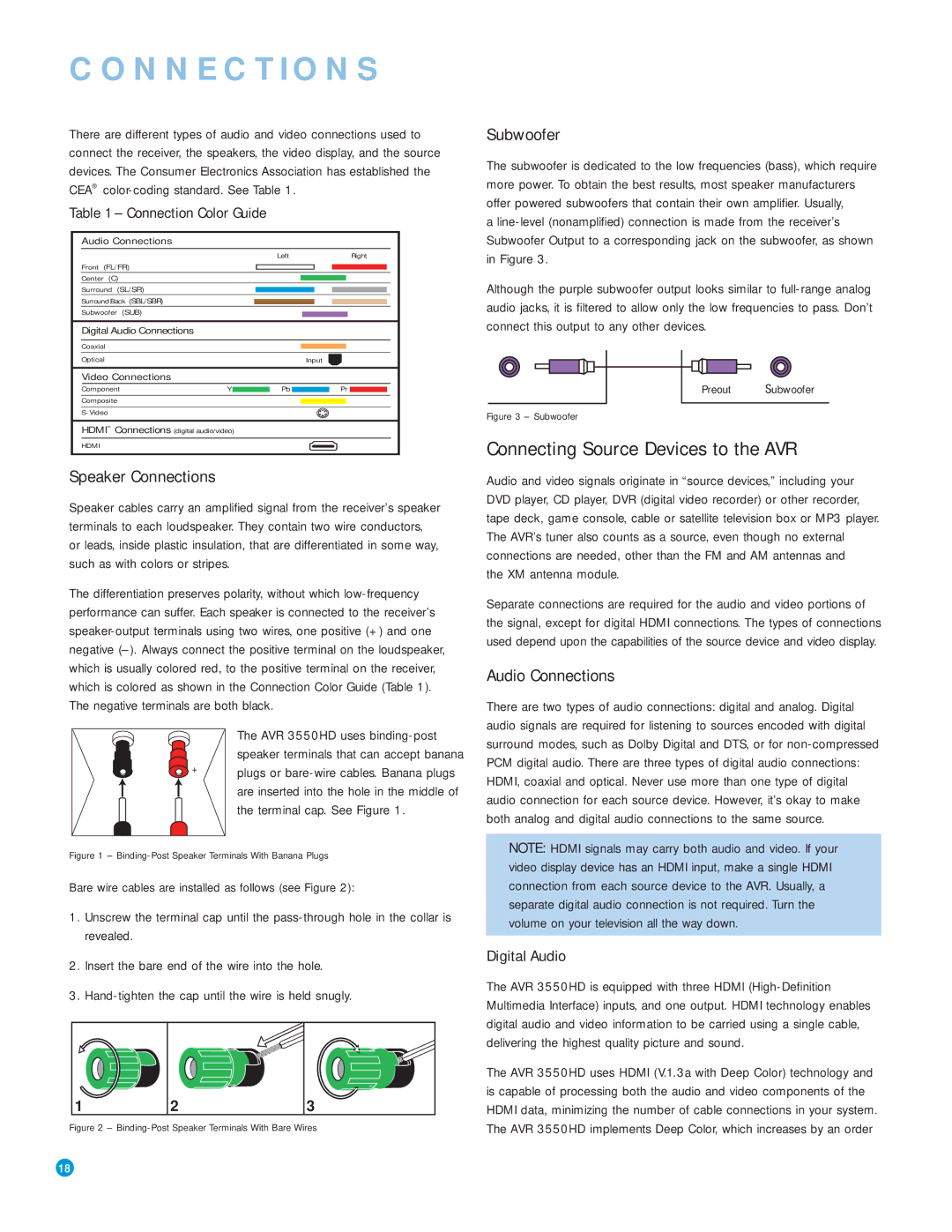
CONNECTIONS
There are different types of audio and video connections used to connect the receiver, the speakers, the video display, and the source devices. The Consumer Electronics Association has established the CEA®
Table 1 – Connection Color Guide
Audio Connections
LeftRight
Front (FL/FR)
Center (C)
Surround (SL/SR)
Surround Back (SBL/SBR)
Subwoofer (SUB)
Digital Audio Connections
Coaxial
OpticalInput
Video Connections
Component | Y | Pb | Pr |
Composite |
|
|
|
|
|
|
HDMI™ Connections (digital audio/video)
HDMI
Speaker Connections
Speaker cables carry an amplified signal from the receiver’s speaker terminals to each loudspeaker. They contain two wire conductors, or leads, inside plastic insulation, that are differentiated in some way, such as with colors or stripes.
The differentiation preserves polarity, without which
|
|
| The AVR 3550HD uses |
|
|
| speaker terminals that can accept banana |
+ | plugs or | ||
|
|
| are inserted into the hole in the middle of |
|
|
| |
|
|
| the terminal cap. See Figure 1. |
|
|
|
|
Figure 1 – Binding-Post Speaker Terminals With Banana Plugs
Bare wire cables are installed as follows (see Figure 2):
1.Unscrew the terminal cap until the
2.Insert the bare end of the wire into the hole.
3.
1 | 2 | 3 |
Figure 2 – Binding-Post Speaker Terminals With Bare Wires
Subwoofer
The subwoofer is dedicated to the low frequencies (bass), which require more power. To obtain the best results, most speaker manufacturers offer powered subwoofers that contain their own amplifier. Usually,
a
Although the purple subwoofer output looks similar to
Preout Subwoofer
Figure 3 – Subwoofer
Connecting Source Devices to the AVR
Audio and video signals originate in “source devices,” including your DVD player, CD player, DVR (digital video recorder) or other recorder, tape deck, game console, cable or satellite television box or MP3 player. The AVR’s tuner also counts as a source, even though no external connections are needed, other than the FM and AM antennas and
the XM antenna module.
Separate connections are required for the audio and video portions of the signal, except for digital HDMI connections. The types of connections used depend upon the capabilities of the source device and video display.
Audio Connections
There are two types of audio connections: digital and analog. Digital audio signals are required for listening to sources encoded with digital surround modes, such as Dolby Digital and DTS, or for
NOTE: HDMI signals may carry both audio and video. If your video display device has an HDMI input, make a single HDMI connection from each source device to the AVR. Usually, a separate digital audio connection is not required. Turn the volume on your television all the way down.
Digital Audio
The AVR 3550HD is equipped with three HDMI
The AVR 3550HD uses HDMI (V.1.3a with Deep Color) technology and is capable of processing both the audio and video components of the HDMI data, minimizing the number of cable connections in your system. The AVR 3550HD implements Deep Color, which increases by an order
18 | 18 |
